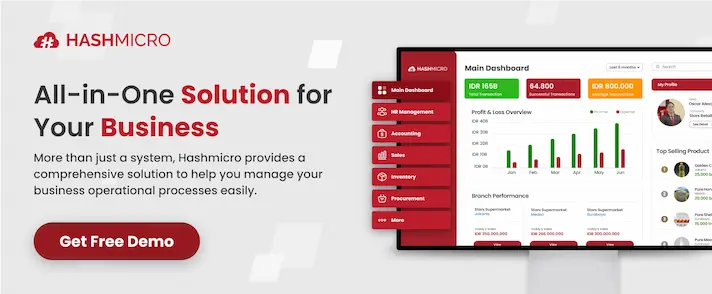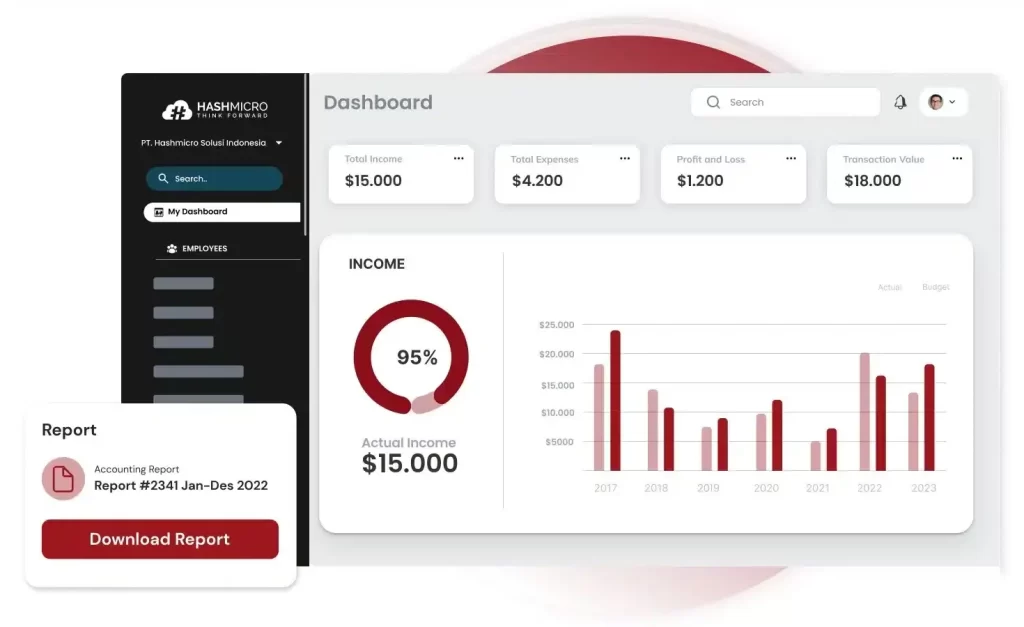Unexpected gaps between budgeted and actual results can cause headaches for finance teams. This is where variance reporting becomes essential, especially in Singapore where costs like rentals, utilities, and CPF contributions fluctuate constantly.
Without proper variance tracking, leaders are often left guessing whether shortfalls come from weak sales, rising expenses, or bigger structural issues. For SGX-listed companies, unexplained variances can even draw extra scrutiny from regulators and shake investor’s confidence.
The good news is that variance reporting brings clarity, as it turns numbers into insights leaders can act on. From higher foreign worker levies to seasonal demand shifts, spotting issues early helps businesses safeguard profitability and make smarter plans.
Key Takeaways
|
What is Variance Reporting?
Variance reports are used to pinpoint when plans deviate and to uncover the reasons behind those changes. They highlight the gap between budgeted and actual figures, or between budgeted and forecasted results.
Such insights enable FP&A leaders to make more informed decisions regarding both short-term and long-term financial strategies.
The wider the variance, the more critical it becomes to investigate its underlying causes. Financial professionals and accountants rely on these reports to explain differences between planned and actual performance.
While variance reports are valuable in many fields, they are most frequently applied in sales, finance, and marketing functions.
Why is Variance Reporting Important?
Preparing a VR helps organisations track performance and uncover unexpected changes in earnings or revenue. Here are five key benefits of accurate VRs:
1. Identifying forecasting mistakes
First, VRs reveal budgeting errors or inefficiencies. Large variances across departments often point to data inaccuracies or human mistakes. Improving the process boosts efficiency and strengthens strategies.
2. Evaluating revenue streams
Next, they spotlight specific revenue issues. High variances in a few items may signal sales drops, pricing problems, or overspending. Managers can then act quickly to address the causes and reduce risks.
3. Improving business strategy
Moreover, VRs guide strategic decisions. Multiple variances may suggest revisiting markets, products, or even the business model. Small changes like adding delivery options can lift revenue and close gaps.
4. Assessing management teams
Equally, they show how effective management teams are. High departmental variances may highlight poor pricing, stock issues, or misdirected focus. Leaders can respond with training to raise performance.
5. Identifying crime and fraud
Finally, VRs can expose risks of theft or fraud. Unexplained variances may signal embezzlement or mismatched sales and inventory records. These red flags prompt deeper investigations to protect resources.
When is Variance Reporting Used?
Variance reporting is widely used in Singapore to track differences between planned and actual results. The frequency and approach often depend on company size and complexity:
- Smaller or younger companies:
- Often perform variance analysis quarterly.
- Limited resources and simpler reporting needs mean monthly reviews are less common.
- Larger companies and MNCs:
- Typically prepare variance reports monthly as part of the month-end close.
- Helps management identify problems or opportunities early.
- For SGX-listed firms, this also supports the requirement to provide quarterly financial results.
When variances are significant, either positive or negative they usually need explanation in management accounts or in the narrative accompanying financial reports. This could be tied to:
- The income statement (e.g., sales lower than expected),
- The balance sheet (e.g., inventory higher than planned), or
- The cash flow statement (e.g., unexpected spending).
Scheduled vs. Ad Hoc Variance Reporting
There are also different types of variance of reporting, depending on the timing and cycles. Two of the most common types are:
- Scheduled reports: Most companies generate variance reports at fixed intervals (monthly or quarterly) to track ongoing performance.
- Ad hoc reports: Department heads in sales, operations, or marketing often request variance analysis outside the reporting cycle to explain anomalies.
- With ERP/BI software: Non-finance managers in Singapore can now run ad hoc reports on demand without waiting for finance or IT support.
How to Write a Variance Report
To prepare a simple variance report:
- Organize your data: Separate revenue and expenses. Typical revenue-side items in Singapore reporting include revenue, cost of goods sold (COGS), gross profit, EBITDA, operating income, and net income.
- Arrange your report: Create columns for item description, actual results, forecasted results, and variance. A fifth column can indicate whether the variance is favorable or unfavorable.
- Add context: Provide short notes explaining why variances occurred (e.g., higher rent due to URA rate increases, or lower sales from seasonal demand shifts).
- Check accuracy: Double-check numbers against source data before finalizing, since errors in monthly or quarterly management accounts can mislead decision-makers.
Two Common Variance Formulas
There are two standard ways to calculate variance: by dollar value and by percentage difference.
- The dollar value variance shows the gap between actual results and the forecast in raw currency terms.
- The percentage variance shows the same difference expressed as a percentage, which is useful when tracking performance trends over time.
Dollar Value Variance Formula
Percentage Variance Formula
(The result is expressed as a percentage.)
How to Read Variance Report
When reviewing variance reports, you’ll usually encounter two main types of variance: positive and negative. Both can appear in different parts of the same report.
Positive Variance
A positive variance arises when actual results exceed the budget or forecast. This might happen due to stronger sales, lower rental costs, cheaper material purchases, or more efficient use of manpower. It could also result from favorable supplier negotiations or government grants.
Importantly, a positive variance in one budget item can balance weaker results in another. For example, if sales targets aren’t met, savings on office rental or reduced transport costs may still help the company stay on track.
Negative Variance
A negative variance occurs when actual performance falls short of the plan, often due to higher expenses.
Examples include materials costing more than expected, utility bills rising with new carbon taxes, or labor costs climbing due to increased CPF contributions and foreign worker levies. These shortfalls reduce profitability and warrant closer analysis.
Common Types of Variance in Singapore
Variances can occur in multiple areas of a company’s budget or forecast. The most common are:
1. Price variance
The difference between the actual price of goods or services and the budgeted price. In Singapore, this often reflects fluctuations in commodity prices, shipping costs, or even exchange rate movements affecting imports. Strong supplier negotiation can help reduce this variance.
2. Usage variance
The difference between actual resource usage and what was budgeted. Negative usage variances may point to poor estimates, inefficiencies in production, or higher wastage — for instance, food waste in the F&B sector or excess construction material use in building projects.
3. Labor variance
The gap between planned and actual labor costs. This may stem from changes in workforce size, wage adjustments mandated by MOM, or increased CPF and Skills Development Levy (SDL) contributions.
In industries reliant on foreign labor, higher foreign worker levies can also create negative variances.
4. Overhead spending variance
The difference between budgeted and actual overhead costs. In Singapore, this is often influenced by rental hikes, higher electricity tariffs, or rising compliance costs. Overhead variances directly affect profitability by raising or lowering net income.
How to Reduce Budget Variances
When your actual results start to diverge from the plan or forecast, the following steps can help you analyze the shift and improve future planning:
1. Identify the variance
First, determine what’s happening in the budget or forecast and where the variance is occurring. Pinpointing when and where deviations appear helps you understand whether it’s a one-off event or an ongoing trend.
2. Check the timing
Next, confirm that the variance isn’t caused by incomplete or mistimed data. For example, variances may stem from accruals not matching cash flow, such as invoices recorded but not yet received.
3. Investigate and adjust
Finally, look for the root cause and assess whether it reflects broader market changes. From there, refine your budget or forecast and make adjustments to areas like pricing, sales activities, or production processes to realign performance.
How HashMicro Accounting Software Supports Variance Reporting
When you’re closing the books, variance reporting can easily turn into a headache. Too many spreadsheets, too much manual checking, and often not enough time to explain what the numbers really mean. That’s where HashMicro Accounting Software comes in.
With the help of AI assistant Hashy, variances are calculated automatically, unusual results are flagged, and you get context behind the numbers without digging through files. Instead of chasing data, you can focus on making decisions.
Here’s what it brings to the table:
- Accurate variance reports in one click, no formulas to fix.
- Clear dashboards that make positive and negative variances easy to spot.
- AI-driven insights from Hashy that highlight what needs attention.
- Reports that meet Singapore’s accounting standards, so you don’t have to spend time tweaking the generated reports.
In short, HashMicro takes care of the number-crunching so your team can put their energy into planning the next move. Variance reports stop being a task and start becoming a tool. So, request your free demo today and experience how much easier financial management can truly be!
Warning: Undefined array key "med" in /home/hashmicr/public_html/blog/wp-content/plugins/insert-headers-and-footers/includes/class-wpcode-snippet-execute.php(419) : eval()'d code on line 281

FAQ on Variance Reporting
-
What makes a variance “material,” and when does it matter?
A variance is considered material if its size could influence business decisions, usually judged by set percentage or monetary thresholds. Companies often set internal benchmarks (e.g., 5% of revenue) to decide which variances require review.
-
How do you prioritize which variances to investigate first?
Focus first on variances that are both financially significant and directly tied to core KPIs like revenue or margin. Secondary reviews can target recurring variances that indicate persistent process or data issues.
-
What’s the difference between a variance report and variance analysis?
A variance report lists budget vs actual numbers, while variance analysis explains the reasons behind those differences. The report is a snapshot, while the analysis adds interpretation through context and supporting data.
-
What makes a variance report meaningful (beyond just numbers)?
It includes accurate data, a defined baseline, and clear explanations that allow managers to act on findings. The report should also separate significant variances from minor ones so attention is focused where it matters.

































